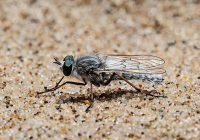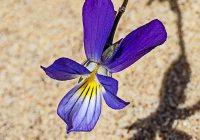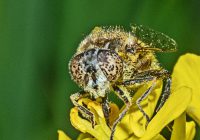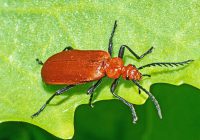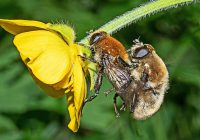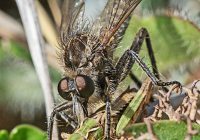Dr Phil Smith’s Wildlife Notes
May 2021
May 2021 was one of the wettest on record. Some parts of the country had more than twice their normal rainfall. Here in Formby, measurable rain fell on only nine days but it was heavy on four of them. Temperatures were mostly below normal but a heatwave began on 27th, lasting to the end of the month. The cool moist conditions soon greened up April’s parched dune landscape, the water-table at the Devil’s Hole rising slightly during the first half of the month, before falling rapidly by 9 cm. Nevertheless, our dune-slacks remained deeply flooded throughout, a legacy of the wet winter.
Most insects like it warm, so May’s cool conditions should have meant fewer of them. This was not at all the case. Spring species are well-adapted to the cold and if it’s cool they spend more time basking in the sun to warm up, making them easier to find. The black St Mark’s Flies and Red-and-Black Froghoppers seemed more abundant than usual and, as in April, Spring Heath Robberflies featured regularly on my dune walks. Pete Kinsella also sent me his sightings of this nationally scarce insect, for which the Sefton Coast seems to be a national ‘hotspot’. Between us, we amassed over 50 records in April and May, the majority being on sandy paths through the fixed dunes. Often providing the only exposed sand in areas dominated by dense vegetation and scrub, these paths may be vital to the Spring Heath Robberfly and to other specialist dune insects like the Coastal Silver Stiletto.
Following up Pete’s suggestion, I went to Marshside on 11th to look for the strangely named Small Spotty-eyed Dronefly, a type of hoverfly associated with wetlands. I saw lots of butterflies, including Orange Tip, Small Tortoiseshell, Peacock and a magnificent male Brimstone (the original ‘butter-coloured fly’). The birds were quite good too with over 100 Black-tailed Godwits in their brick-red summer plumage and six of the sadly declining House Martin. Less welcome were several pairs of feral Canada Geese with their numerous offspring. I’d almost given up hope of finding the hoverfly until I decided to check out a stand of flowering Oil-seed Rape. Success! On the first flower, there was my quarry with its characteristic spotted eyes. Two days later, Trevor Davenport joined me at Sands Lake, Ainsdale, where the striking flowers of Bogbean were just appearing. We walked up to the ‘New Green Beach’ where we were serenaded by four or five Skylarks singing in unison; a wonderful sound. Sheltered from the onshore wind by a row of Alders we found 20+ newly emerged Azure Damselflies and then, unexpectedly, two Large Red Damselflies, a species almost unknown on the coast until this year. Another trip to Sands Lake on 18th was rewarded with a lovely Mini Tiger hoverfly on Alexandersnext to the carpark, while the slack north of the lake produced nine Four-spotted Chasers and my first Common Blue and Small Heath butterflies of the season.
Trevor wanted to look for the spectacularly colourful caterpillarsof White Satin moth so on 19th we headed for the big slack south of the Discovery Centre at Ainsdale Local Nature Reserve. It was still flooded but we found several well-grown caterpillars on Creeping Willow round the edges. Other highlights were a freshly emerged Broad-bodied Chaser, which took its first flight before we could get photos, three Swifts, several Swallows and House Martins and singing Whitethroats and Grasshopper Warbler. I was particularly pleased to see several plants of the increasingly rare Dune Pansy, which had obviously benefited from the rain. On our way back, a sandy track had a group of six Coastal Silver Stilettos, a beautiful, tiny fly that must often be overlooked.
In late May, Alt Bridge on Downholland Brook is a must for one of our most gorgeous insects, the amazing Banded Demoiselle. My first this year was on 22nd with several Large Red Damselflies. Another of my regular haunts was a strip of woodland on the eastern edge of Formby. Here, I was stalking a female Narcissus Bulbfly on a buttercup with my camera when a male barged in and mated with the female, allowing me to photograph the action. A few days later, the same place produced the remarkable sight of eight Red-headed Cardinal beetles together in a small area. I had never seen more than a single individual before.
The last day of the month was a blazing Bank Holiday Monday. Avoiding the worst of the horrendous traffic jams on roads leading to the beach, I explored the eastern part of Ainsdale Local Nature, where I saw four people all afternoon. It was too hot for most insects but I did find a Fan-bristled Robberfly feeding on a young Field Grasshopper. The verges on Rothwell Drive and Kenilworth Road had masses of the attractive Knotted Clover, a regionally rare annual often burnt off by spring droughts but, happily, not this year.

